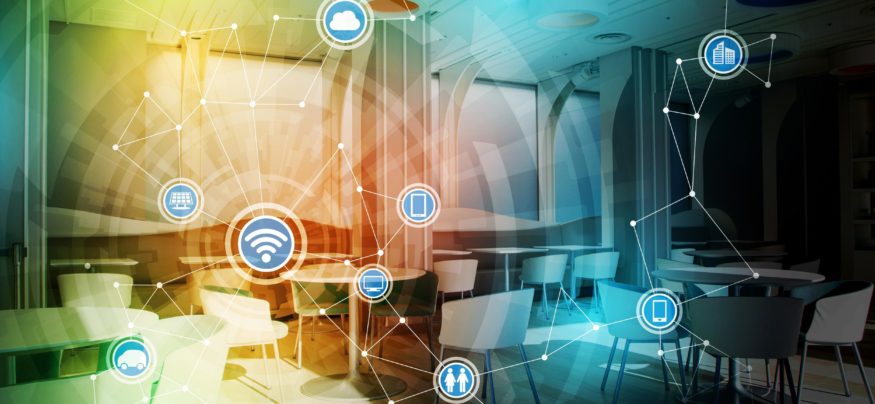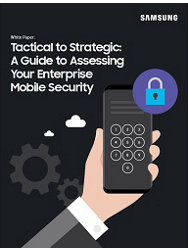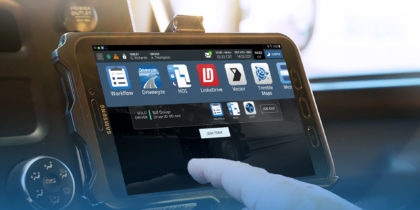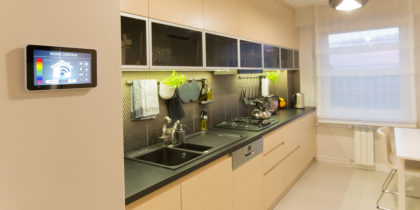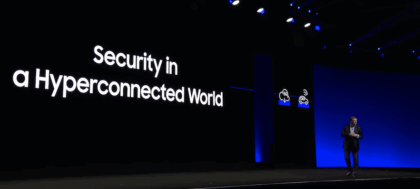In this News Insight, NetworkWorld looks at the unique challenges of managing the Internet of Things, and how it differs from traditional mobile device management. If you’re looking for a strategy to harness the IoT to drive meaningful results for your business, be sure to explore our IoT solutions page. —Samsung Insights editorial team
They say necessity is the mother of invention, and the accelerating pace of the mobile revolution is no exception. The proliferation of mobile devices affected countless industries, creating a powerful need for businesses to manage those devices. And so, mobile device management (MDM) was born. While these solutions have evolved considerably over the years to keep pace with new technologies and innovations, their core function remains enabling IT personnel to remotely manage, track, troubleshoot and secure devices – mostly smartphones and tablets these days.
It’s easy to see the parallels between the factors driving the development and adoption of MDM – namely device control and security – and those that brought about IoT device management. Similarities in concepts and terminologies further cloud the distinction between the two. But, as any company that has attempted to repurpose an MDM solution for the management of IoT devices can attest, the resemblance is only superficial.
Any number of technical guides can detail how the technologies behind MDM and IoT device management differ. However, there are a few key disparities that businesses should consider when determining what type of solution is best suited for their unique situation.
1. Variety and complexity
The most obvious disparity is the variety and complexity of devices each solution is built to handle. As the name implies, managing mobile devices – typically smartphones and tablets – is the primary focus of MDM. While development of the technology has progressed – accelerated by the popularity of bring your own device (BYOD) workplaces – to the point that it can now support additional endpoints, its scope remains limited. Conversely, the variety and complexity of IoT devices is extremely broad. The spectrum stretches from two-dollar temperature sensors to million-dollar wind turbines, which is why IoT device management solutions are designed to control a range and sophistication of devices far exceeding that of MDM.
2. Focus
The human element is another important differentiator. With MDM, the vast majority of devices are tied to a person. Furthermore, much of the focus centers on how those people interact with the devices – who can log in, what installs are allowed and when, varying levels of access, and so on. IoT lacks this level of human involvement because there’s no correlation between people and devices. This lack of direct human interaction means the use cases and problems to solve are different. The focus is more on enabling advanced functionality, such as predictive capabilities, with a device rather than how someone interacts with it.
Time to Reassess Your Security Posture?
Download this in-depth guide to reevaluating your mobile security plan. Download Now
3. Nature of devices
Although the mobile devices central to MDM are important to a wide variety of areas across a business, the consequences of one of them failing are generally fairly isolated. If they go down, the people directly tied to each device – and possibly others dependent on them – are the only ones affected. IoT device management generally deals with more mission-critical, industrial equipment. These are the types of devices that perform functions that are key to a business’s core operations. So, if one is compromised or fails, the repercussions are felt throughout the entire organization.
4. Scale
As mentioned above, in most MDM use cases the ratio of devices to personnel is 2:1 (or not far off) because the devices in question are assigned to an individual user. So, most solutions were designed to manage device deployments that are restricted by the number of people within an organization. In an IoT world, as the population of connected devices grows exponentially by the day, there’s seemingly no limit to how far the ratio of devices to people can skew in favor of the former. The sheer number of devices generate countless extra details and issues that were never considered with MDM, which can lead to a host of scalability problems that only IoT can solve.
5. Volume and frequency
The frequency with which businesses need to remotely interact with devices is another valuable distinction between MDM and IoT device management. With MDM, the tasks required to manage devices – such as onboarding, provisioning, updating software, diagnosing issues and decommissioning – are limited, which restricts the frequency of interaction. So, solutions are designed for relatively infrequent device interaction – usually anywhere from several times over the course of a year, to a few times each month. Compare that to IoT device management, where the interaction intervals shrink from months to days or hours. And on top of the frequency increase, the interactions require far more heavy lifting. For example, a connected vending machine can require content updates that can include images or videos, which goes well beyond the capabilities required for your average configuration change or software update.
Attempting to apply MDM solutions to IoT problems provides a good example of the futility of repurposing technology to address use cases for which it was not designed in hopes of overcoming obstacles for which it is ill-equipped to handle. Whatever potential cost savings this sort of makeshift solution might provide will almost certainly pale in comparison to the expense of lost productivity and unrealized potential. As connected devices become more prevalent and IoT adoption continues to spread, the challenges surrounding device management will only grow. The best way a business can equip itself to navigate the changing landscape is to approach digital transformation efforts with careful planning and the right solutions.
This article was written by Dave McCarthy from NetworkWorld and was legally licensed through the NewsCred publisher network. Please direct all licensing questions to legal@newscred.com.
If you’re looking for a strategy to harness the IoT to drive meaningful results for your business, be sure to explore our IoT solutions page.
![]()
